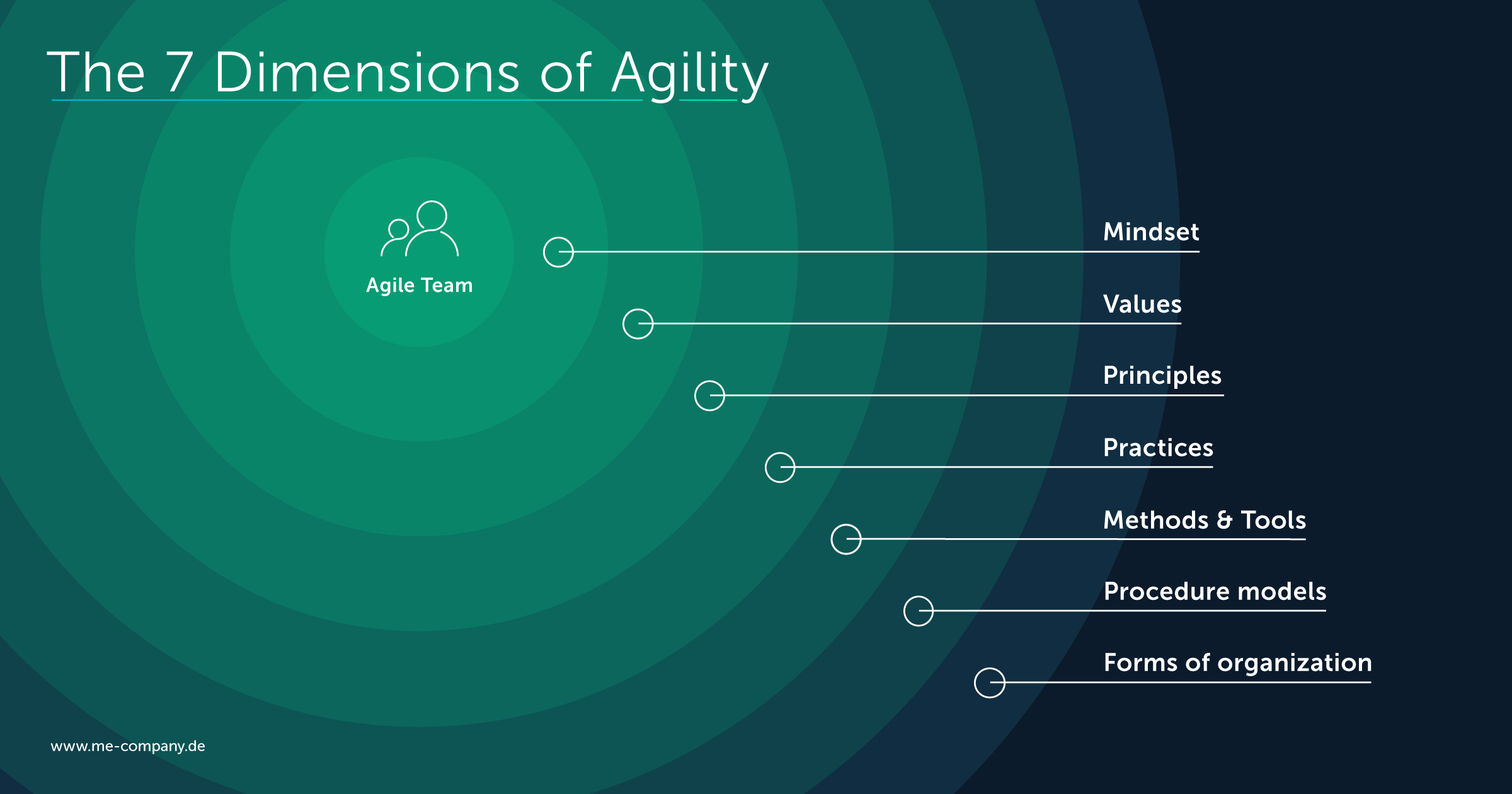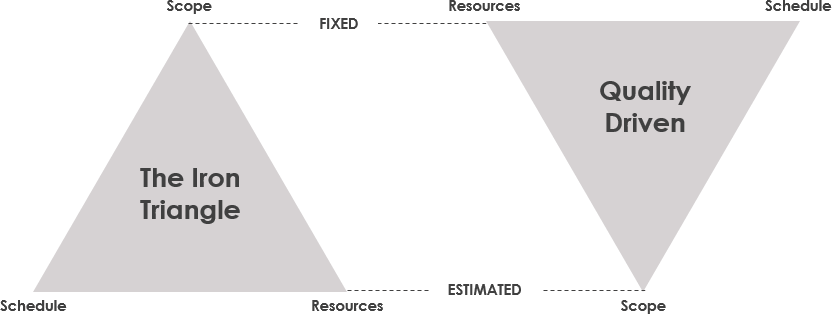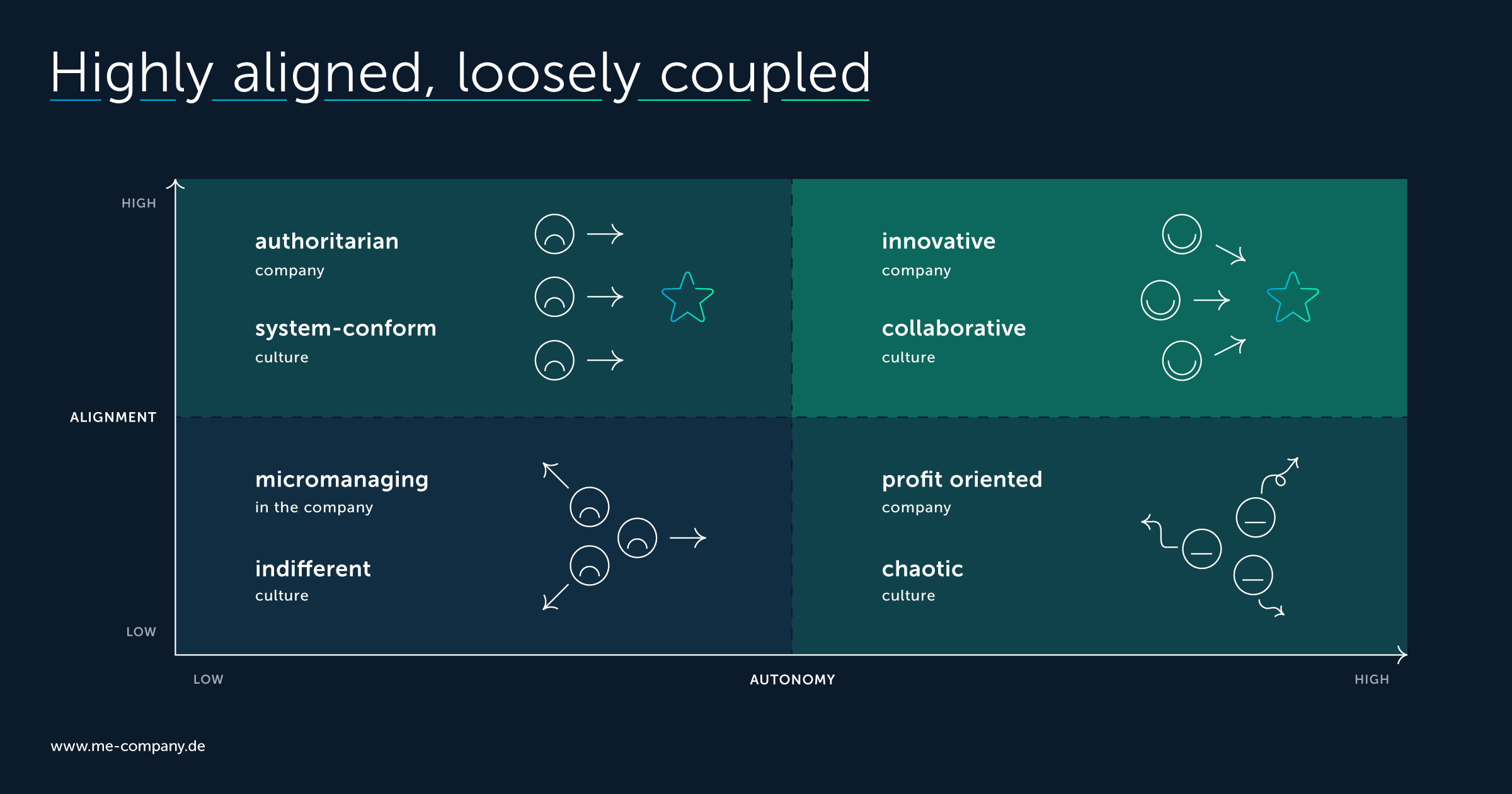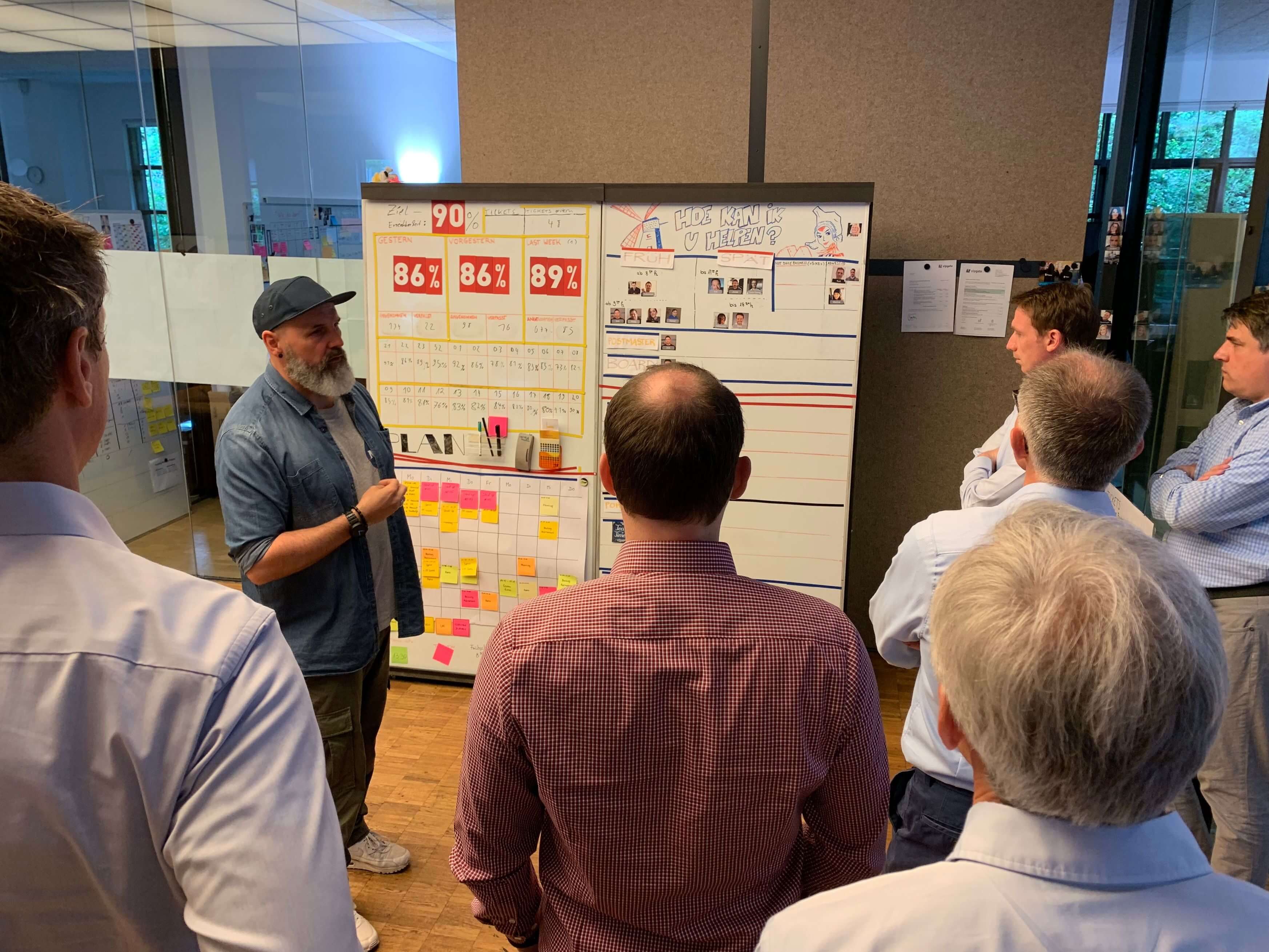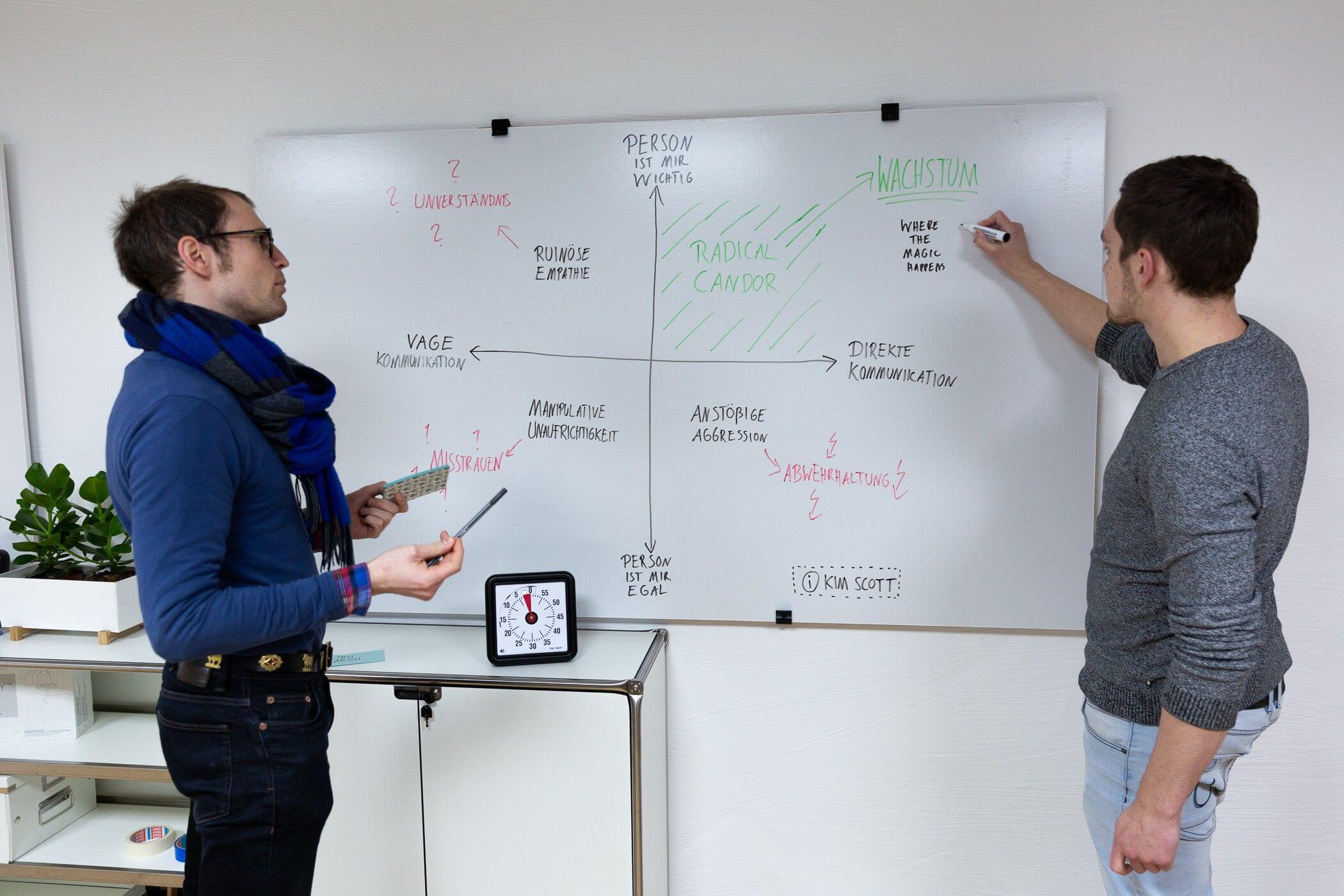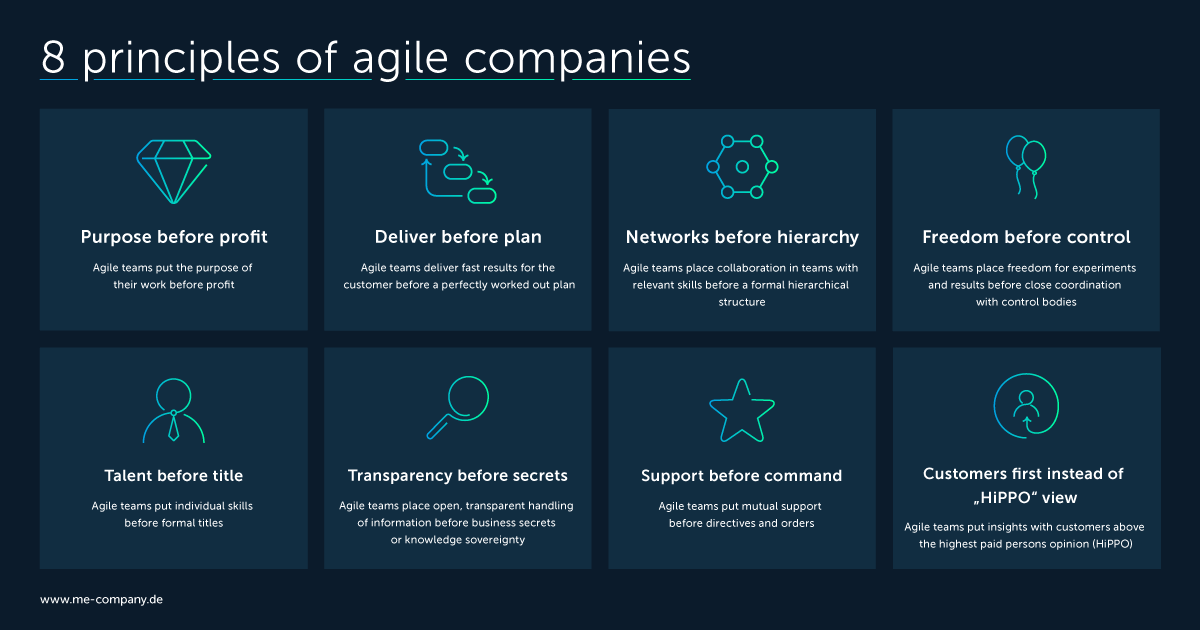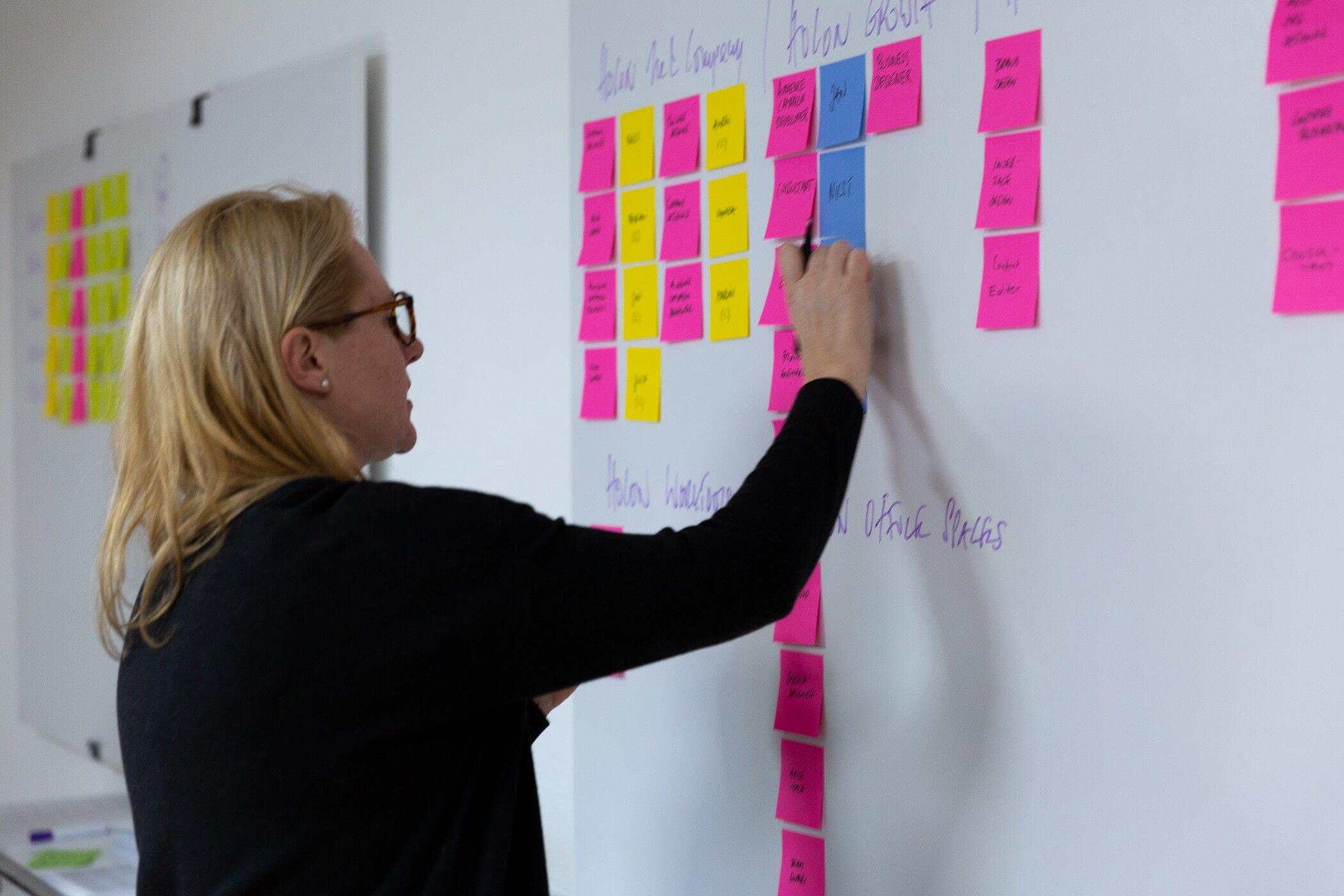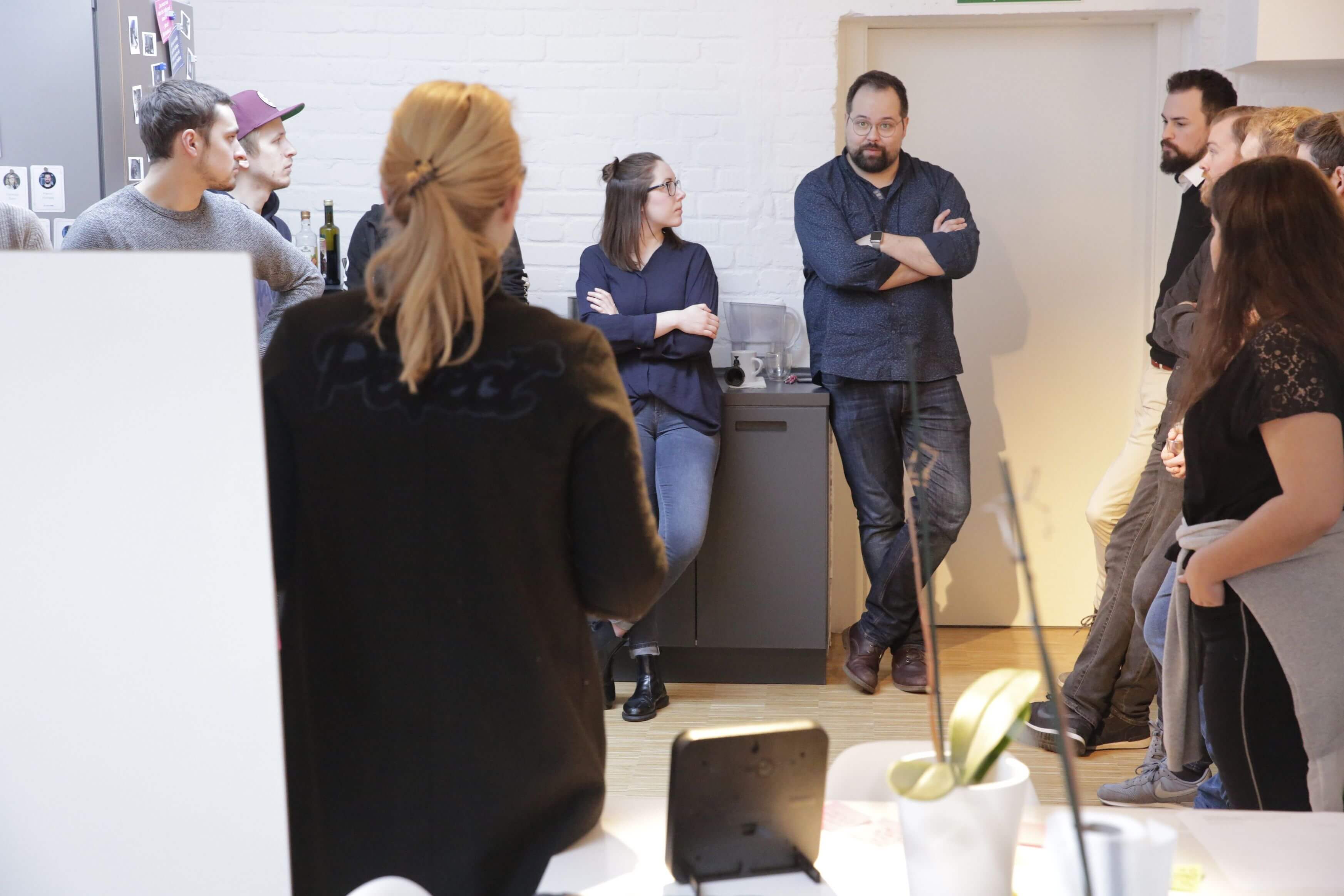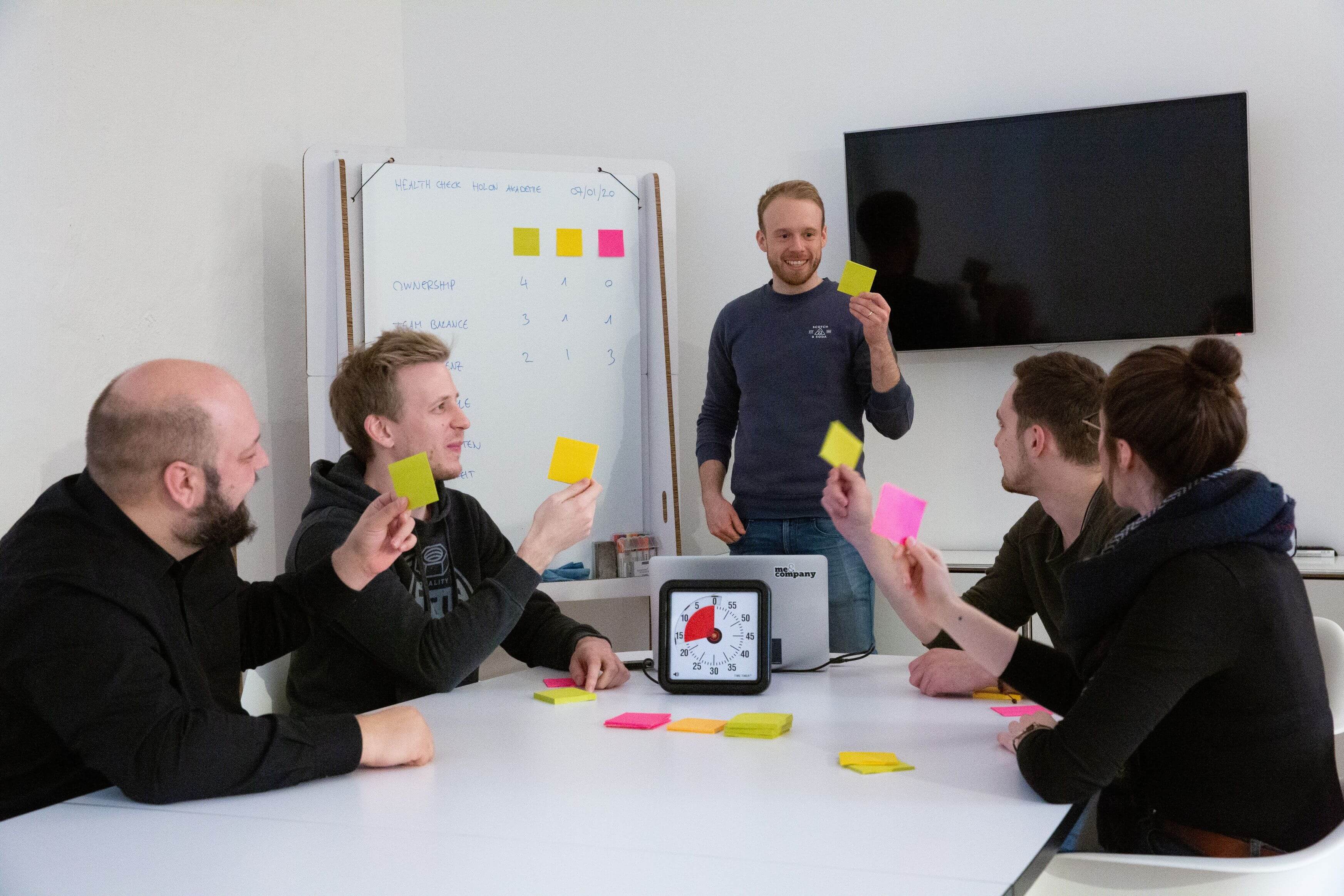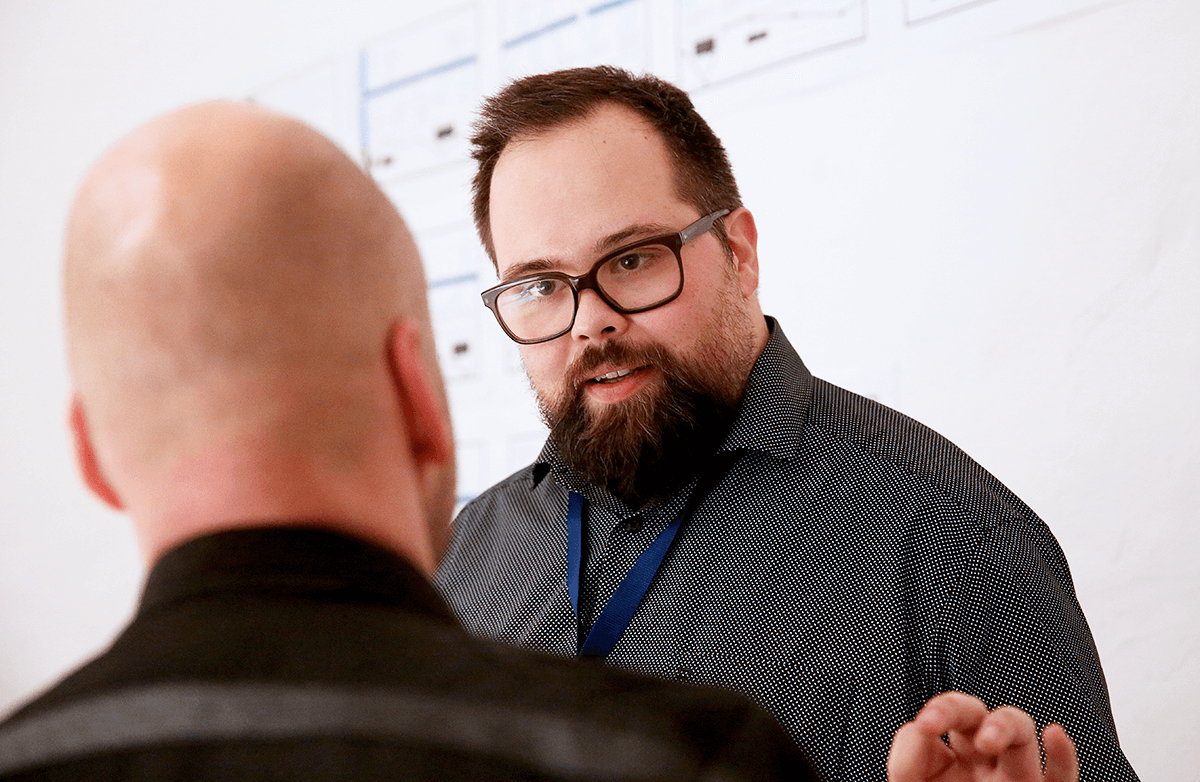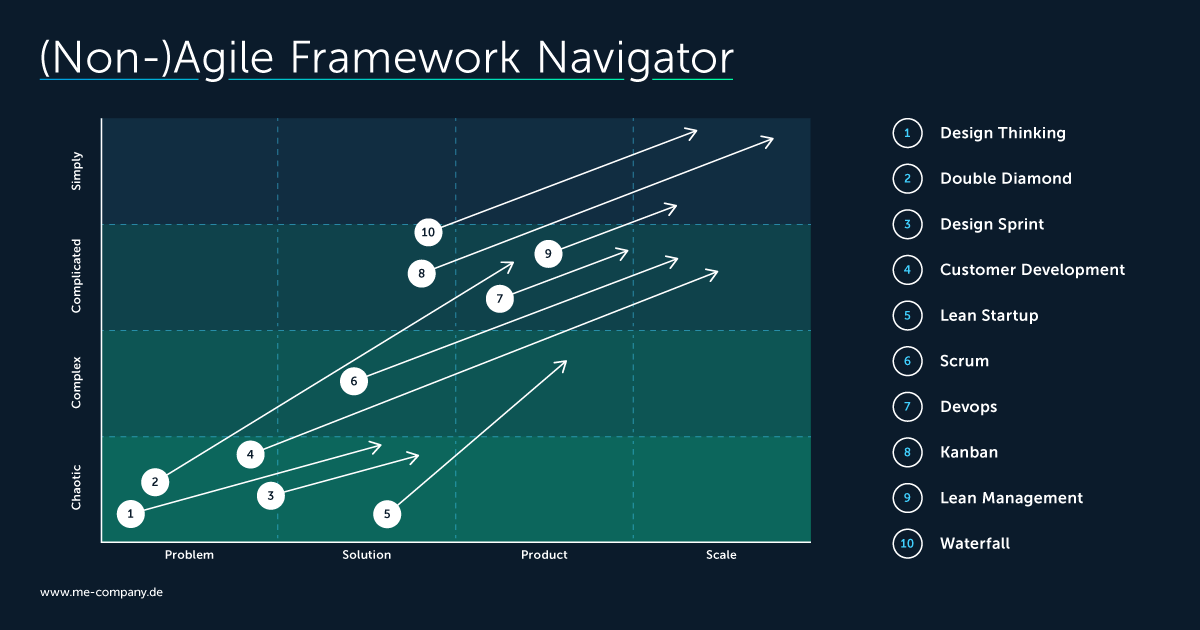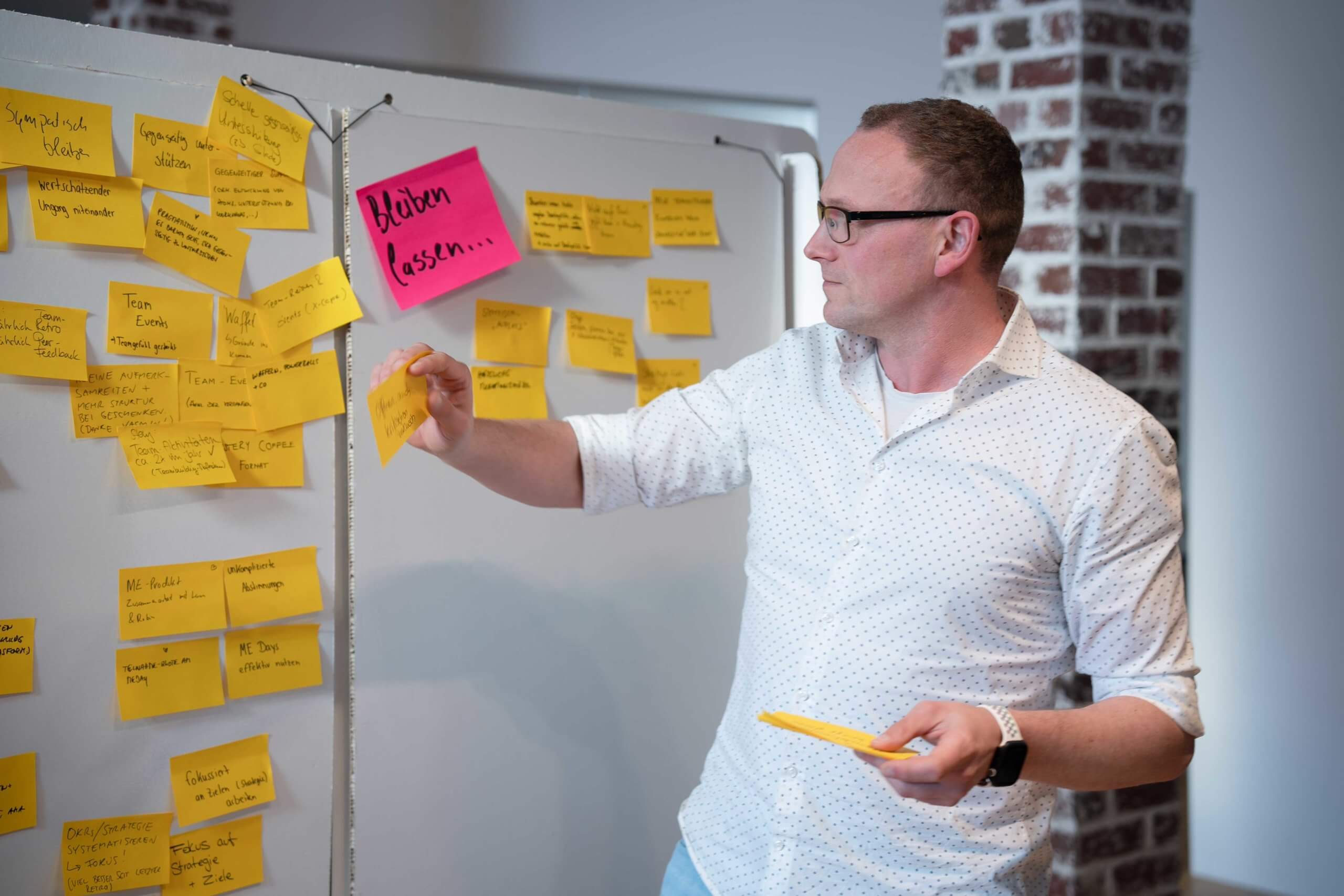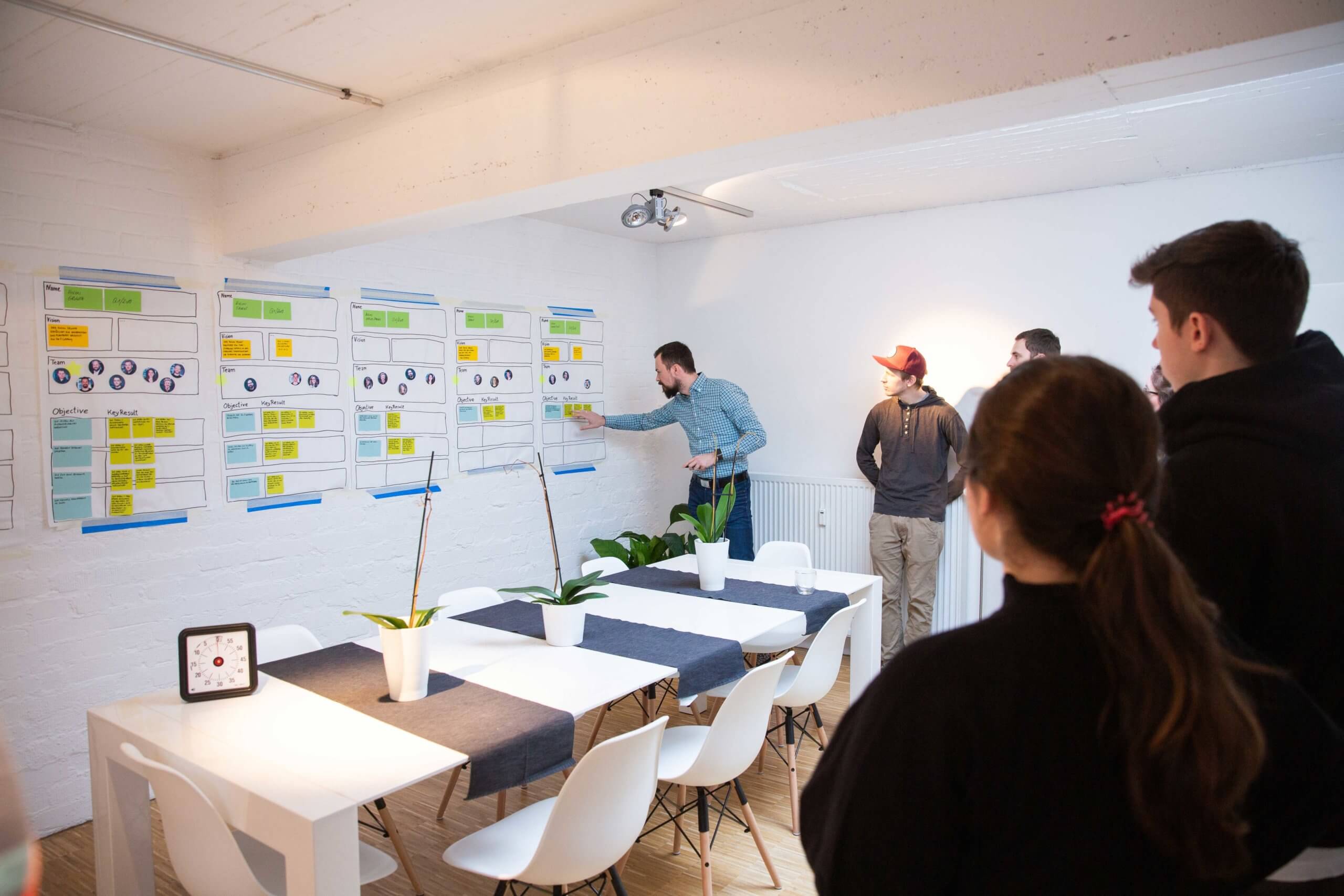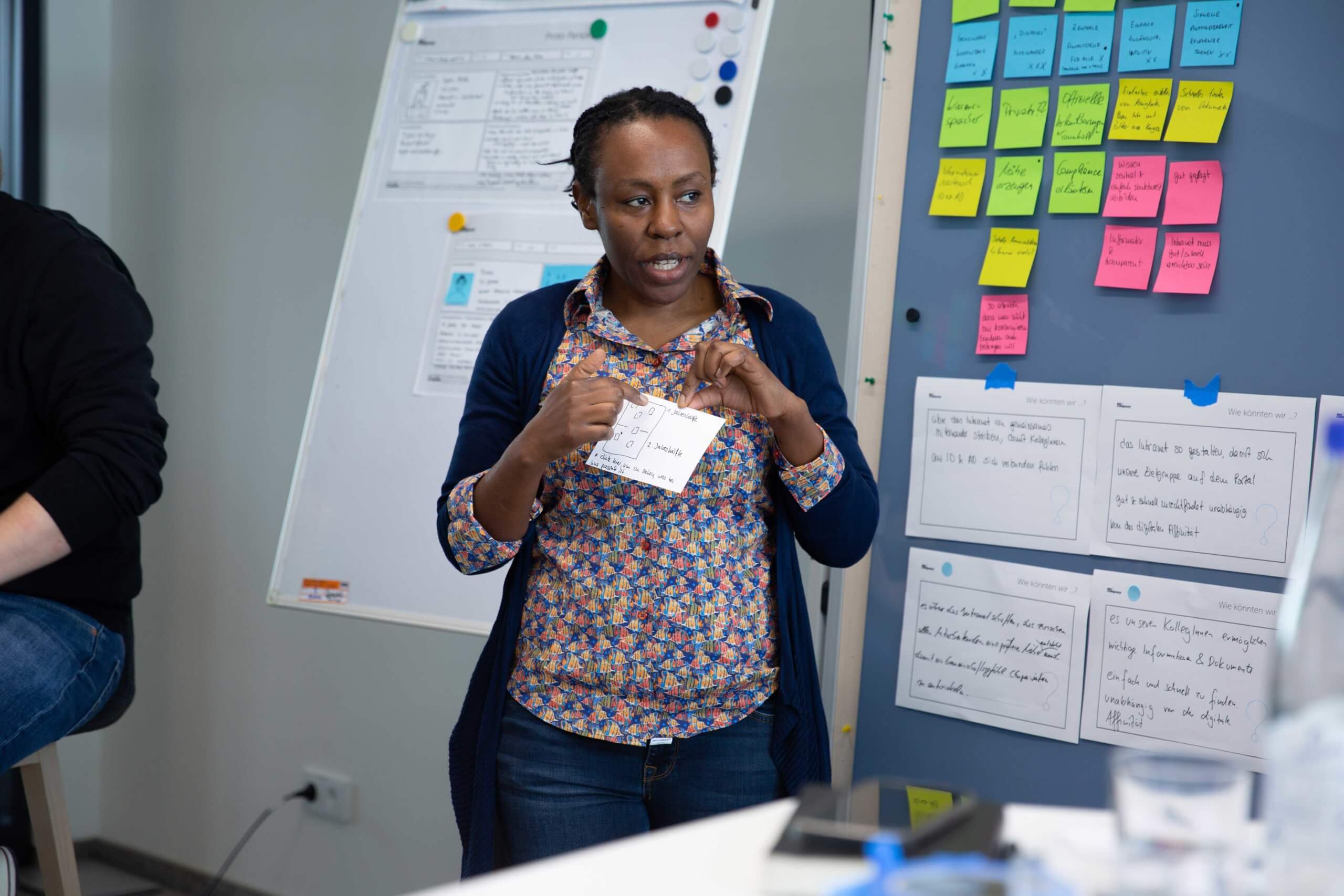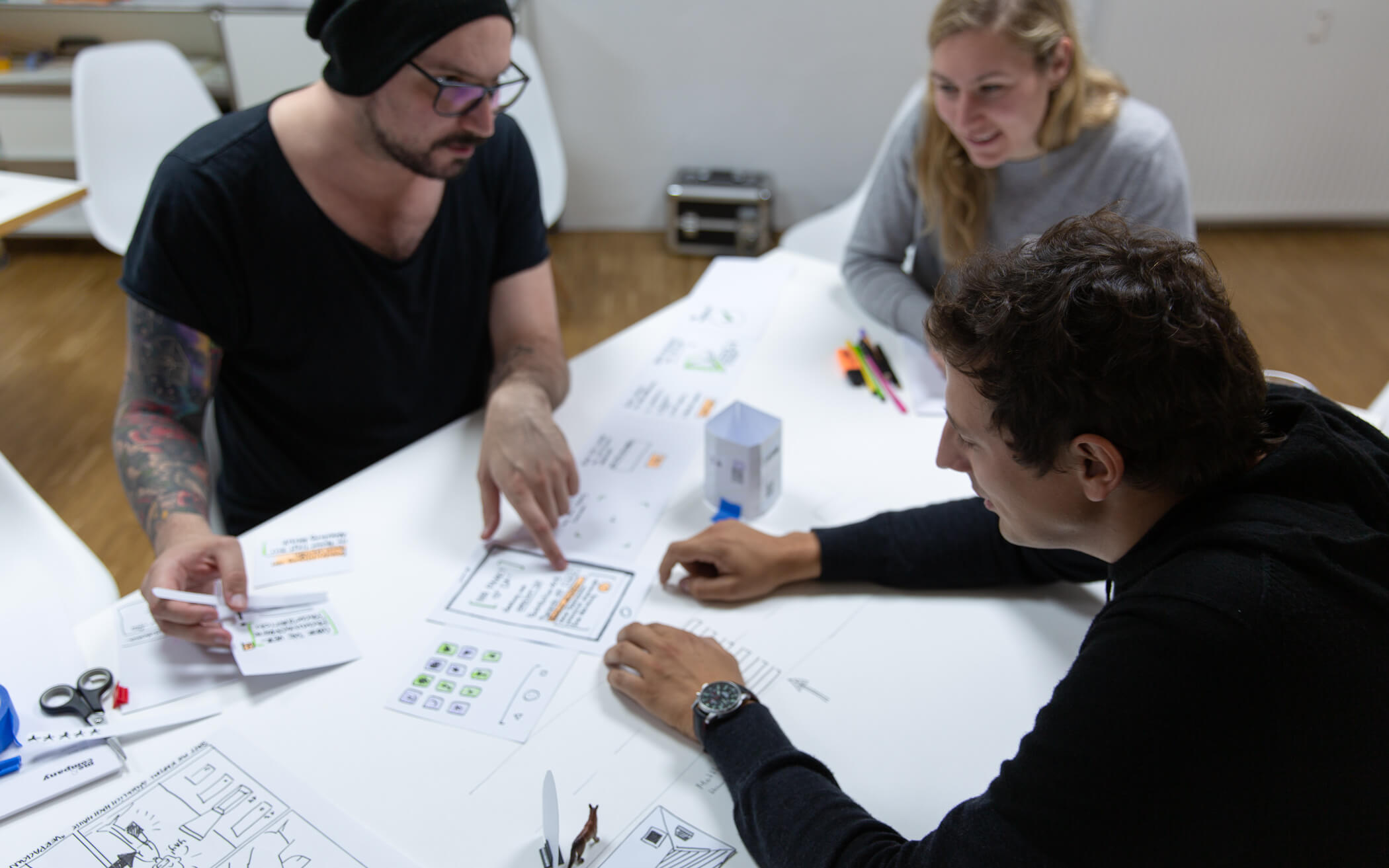
The 7 Dimensions of Agility
When it comes to contemporary management, the topic of agility is quickly encountered. The definition is usually quite broad, because agile work is found at all levels of collaboration. This article gives you a compact introduction to agility without leaving out anything important.
Content of this page
- What is agility? Definition in a few sentences
- Chapter 1: 7 levels of agility at a glance
- Chapter 2: Mindset as a foundation for agility
- Chapter 3: The agile manifesto and values for agility
- Chapter 4: Priciple of agility vs. Taylorism
- Chapter 5: Agility and agile practices in everday work life
- Chapter 6: Agility and its methods
- Chapter 7: Agile frameworks as the face of agility
- Chapter 8: Scale agility with new forms of organization
What is agility? Definition in a few sentences
Agility is a form of collaboration that enables a team to react faster to changing situations, to act more customer-centered and more efficiently. Since the middle of the 2010s it has increasingly replaced the widespread „command and control“ management.
Agility takes place at all levels of collaboration. Agile organizations introduce special organizational forms, process models, methods and practices for this purpose. In addition, soft factors such as agile principles, values and an agile attitude lead to a cultural rethinking within the company.
Today, agility can be found in thousands of companies of all sizes, industries and regions. The transformation to an agile organization is usually carried out by agile coaches and agile organizational developers.
Chapter 1: 7 levels of agility at a glance
Even though agility is often mistakenly equated with Scrum, the new forms of collaboration cover a much more global subject area. A concrete definition of agility is often difficult to come up with, because it is not possible to determine whether a company is agile based on a single tangible method or a checklist. Usually it is soft characteristics such as the lived culture and attitude of all employees that show the agile maturity of an organization.
To make matters worse, many issues of agile leadershipand work are constantly being developed by the global community, so there is and will be no completed work on this topic.
One example of these developments is “Working Out Loud”, an agile learning system that was developed into a methodical process by John Stepper. Only since 2015 has WOL enjoyed increasing popularity and distribution – primarily in German-speaking countries.
On our way to an agile organization we have met more than 100 agile pioneers. In the process, we have searched for patterns that allow for a definition of agility. The result is seven levels of agile work, which serve as a basis for this article.
- Mindset: What is our inner mindset towards people and work?
- Values: Which ideals do we consider morally desirable?
- Principles: What rules and guidelines do we follow?
- Practices: What rituals and nudges promote our cooperation?
- Methods & Tools: Which tools help us?
- Procedure model:What do the processes of our collaboration look like?
- Forms of organization: How we do structure work across many teams?
Chapter 2: Mindset as a foundation for agility
Especially agilists with many years of experience see the right attitude as the most important feature of the agility definition. The agile mindset is the decisive factor for successful cooperation.
Mindset is derived from values. In agile organizations these can be recognized by three central characteristics:
- Customer centricity / human centricity
- Performance orientation
- Adaptability
Customer centricity / human centricity
Agile people and teams work primarily for the customer. They see profits as the result of good work, not as a reason. With this in mind, they work continuously to increase the added value of their product from the user’s perspective.
Human-centered collaboration
The agile ideology is based on a thoroughly positive image of mankind – the Theory Y . Both with their customers and with regard to their colleagues, agilists first believe in the good. They trust each other, act openly and transparently. Their attitude is: „If 10% of the people involved have bad intentions, why should the other 90% suffer? As a result, in agile companies, measures and systems for protection are only developed when a concrete need arises.
Even with agile leadership, people and their needs are at the center. Agile leaders act in a service-oriented attitude and create an environment that helps employees to develop and take the best possible care of customers.
Performance orientation
“Chaos”, „laissez-faire“ and „anarchy“ are typical prejudices regarding agile work. But when you take a closer look at new forms of collaboration, you will quickly realize that the opposite is true: In the definition of agility, performance and structured working are a central theme.
It may seem counterintuitive when an agile team sets itself the goal of maximizing the amount of work not done. In fact, agilists express that they focus and put quality over quantity. They work to constantly increase the value delivered to the customer and try to minimize „waste“ of resources.
For this purpose, agile teams measure themselves out of self-interest with corresponding KPIs, set SMART goals and actively seek to improve their potential. In this way they become High Performance Teams.
In general, they have the attitude to act on their own responsibility in the interest of their customers and their own company. Quite often they define growth more by the number of enthusiastic customers than by the profit generated. At the same time, they still think like an entrepreneur: they are well aware that profits pay the costs of the future and are in the interest of relevant stakeholders.
Adaptability
„Always in Beta“ – with this winged word the agile community describes its openness to constant change. In software development, „beta“ is a product version that is almost ready for the market, can already be tested and used, but may still have minor bugs. But the most important feature is: The beta version already delivers the full added value for the customer.
Adaptability is not only by word definition part of agility. It refers not only to processes but also to the mindset of all agile team members. They should develop an attitude in which they constantly question the status quo, if necessary adapt their own procedures and also further development to changing conditions. Based on the agile motto „Inspect and Adapt“, an agile organization reacts to the VUCA World and adapts to new situations and insights.
For this reason, agile teams set themselves long-term goals in terms of a „purpose“, then sketch out a rough path, but always plan only the next steps. They are required to keep in constant contact with the customer, to learn from the close exchange and to adapt the developments according to the newly gained knowledge.
For this reason, the practices and methods of project management are questioned and adapted for agile work. This change can be illustrated well with some examples:
- Gantt plans become a prioritized list of desired work results, the Product Backlog
- Jour Fixes give way to special agile meeting formats like the Sprint Review
- In project controlling, the budget-relevant magic triangle is reinterpreted (see picture)
Chapter 3: The agile manifesto and values for agility
Agility is strongly influenced by a document written by 17 software developers in 2001: The Agile Manifesto contains various values and principles that are particularly helpful in the development of digital products. Even if the statements of the manifesto are still true, the agile values have been further developed by many Agile pioneers for a broader field of application, so that there is no longer a uniform definition, but a large common denominator. Below are seven values that are most commonly found for the Agile definition.
Autonomy
The topic of self-organization was already included as an important element in the agile manifesto. Teams should be given the freedom to decide independently how to solve a task. To this end, product owners – a role that should be part of almost all agile teams – define clear statements about what is expected from the result. The implementation is decided jointly by the team, without management participation.
In agile companies, a management structure has usually been established in which the power to make decisions is distributed decentrally to different roles and persons. Nevertheless, care is taken to ensure a high level of common orientation towards overriding goals. And this is how the principle of „highly aligned, loosely interlocked with each other“ emerged, according to which agility is scaled up on a larger scale.
Self-commitment
With lots of freedom comes lots of responsibility – agile teams are aware of this. In particular, they take complete ownership of their product in order to meet their own performance standards. They commit themselves to customers – not the management – to deliver continuous added value.
For this purpose, agile teams usually meet every two weeks for a joint planning. In this format, they prioritize their tasks and commit to deliver a mutually agreed result within the next work cycle.
In addition to this practice, there are other rituals and measures that are primarily aimed at integrating continuous learning into the agile daily routine. For example, many agile organizations introduce a day where they only deal with their own personal development.
At the Düsseldorf-based telecommunication company, this day is called Open Friday. At the Swiss adhesive tape manufacturer Siga it is Workshop-days. We at Me & Company have our MeDays.
Respect
Respectful cooperation is very important for agile teams. Despite different perspectives, skills and knowledge levels, they are interested in working towards a common goal. In this context, working together at eye level is common practice and part of the agility definition.
A group of agilists has been devoting a lot of attention to the topic of „eye level“ since 2014. Since then, two films have been produced that portray companies (1st film) and educational institutions (2nd film) with their agile values, practices and structures.
For the definition of agility, the core value of respect stands out. It is the basis for trust and psychological security in a team. Norm Kerth, an agile thought leader, wrote about this in his book “Project Retrospectives: A Handbook for Team Review”:
Regardless of what we discover, we understand and sincerely believe that everyone has done the best work they could in view of their level of knowledge, skills and abilities, available resources and current situation.
Focus
For the definition of agility, the core value Respect Agile process models such as Scrum and Kanban support agile teams in concentrating their creative power on a very limited amount of work. To this end, they work with „Work in Progress“ limits and regularly prioritize their goals.
Furthermore, „focus“ as an agile value also shapes the development of products and positioning of agile companies. „DOTADIW – Do one thing and do it really good“, has long since transferred from the community of software developers to the agile startup scene. Originally, this was about limited technical resources. But since time and money are also always limited in our working world, focus as a core value has become an integral part of the agility definition.
Transparency
The secret agendas of colleagues*, silo thinking, knowledge sovereignty – lack of transparency means that in the daily routine of most companies, teams are unable to develop their full potential. Discussions are held, countless reports are produced and individual subject experts are haggled over.
To avoid this, teams in agile environments work on handling information as transparently as possible. For example, they publish their results, their learnings and KPIs in freely accessible places.
In addition, many agile process models contain practices that make the current work status visible to all interest groups. In this way, they save a lot of time and help managers and partners to always build up the relevant knowledge.
Courage
Agility unfolds its strengths especially in areas that are characterized by uncertainty and lack of planning. As a rule, those involved work in an environment where the goal is clear, but the problems and solutions are worked out in the process.
In such an environment one needs the courage to try out new things, to say „I don’t know“ and to be able to deal with mistakes openly. For this reason, courage is one of the core values for defining agility
Openness
In the value system of the Agility Definition, courage and openness are close relatives. Both are important for learning and for breaking new ground. Both are essential to establish a lively feedback culture.
Many agile methods and practices are about good communication. Agile teams regularly give each other open but respectful feedback. This requires openness on the part of both the feedback giver and recipient, so that messages are conveyed and heard correctly.
Against this background, agile teams often deal with communication models such as Radical Candor, non-violent communication or GROW. They are aware of how important a good exchange is for valuable work to be created.
Chapter 4: Priciple of agility vs. Taylorism
Agility is often considered a counter-model to the widespread forms of leadership associated with Taylorism. Besides attitude, it is above all the principles of cooperation that make the definition of agility possible.
Most agile companies react to everyday organizational issues with different methods and rituals. What they do have in common, however, is their attitude and principles that clearly distinguish them from the Taylorist organization.
In the agile work environment, there are well over 65 principles, that teams follow depending on the methods they use. Eight characteristic guard rails can be identified for cooperation in its entirety:
- Purpose before profit: Agile teams put the purpose of their work before profit
- Deliver before plan: Agile teams deliver fast results for the customer before a perfectly worked out plan
- Networks before hierarchy: Agile teams place collaboration in teams with relevant skills before a formal hierarchical structure
- Freedom before control: Agile teams place freedom for experiments and results before close coordination with control bodies
- Talent before title: Agile teams put individual skills before formal titles
- Transparency before secrets: Agile teams place open, transparent handling of information before business secrets or knowledge sovereignty
- Support before command: Agile teams put mutual support before directives and orders
- Customers first instead of „HiPPO“ view: Agile teams put insights with customers above the opinions of highly paid managers
These principles serve as a guide rather than fixed laws. For each principle there is certainly a company that acts differently and yet is successful. However, it is very important for agile companies to develop further in the sense of these principles on a daily basis.
Chapter 5: Agility and agile practices in everday work life
Practices are one of those characteristics of agile organizations that are visible and can be easily recognized by outsiders. They are rituals that are usually implemented with the help of small tools.
Here are some examples.
Timeboxing
To ensure that teams work in a focused manner, they often set themselves a tight time frame. They use a stopwatch for this. Therefore, Time Timer models are usually found in the offices of agile companies.
Visualize
In the context of complex tasks, it is often important to bring together multiple perspectives. To make this possible, agile teams like to visualize with the help of whiteboards and post-its.
Standups
For good communication there are fixed meeting rituals in almost all agile organizations. Daily Standups, for example, are such a format: Every day, all team members meet at a fixed time and share their current status within 15 minutes. They all stand in a circle and speak one after the other.
Chapter 6: Agility and its methods
Design Thinking, Scrum, Kanban – often agile process models or frameworks are wrongly called methods. In reality, however, they only provide a framework and can be used in a variety of ways with various methods.
One example is the agile retrospective. Originally at home in the Scrum Framework, there are now well over 100 different methods for the meeting format. Some of these are very different, as the following three examples show:
As for the retrospective and other Scrum rituals, there are many agile methods for each framework. Usually the scrum masters or agile coaches bring a comprehensive toolbox into the team from which they select the appropriate tools according to the situation.
More examples of agile methods can be found here in our Article collection:
Education as agile Coach
In the Train the Trainer program you will become an agile coach in 10 months alongside your work. 128 hours of training, practical projects and peer groups, as well as individual coaching by experienced agile coaches.
More about Agile Coach TrainingChapter 7: Agile frameworks as the face of agility
Process models or frameworks provide agile teams with a framework for collaboration. They are often used to define agility because they are very tangible as comprehensive models.
All process models outline an ideal-typical process with clear rules. In addition, frameworks such as Scrum or Kanban require specific roles, such as the Scrum Master or Product Owner. They provide helpful answers to many questions in process organization.
Mostly only frameworks from the software context are attributed to agility. But the picture is changing, so that process models from innovation management, such as Design Thinking and Lean Startup, are now added to agility. Models that originate from the Toyota Production System, such as Lean Management and the Last Planner System, which is at home in the construction industry, are also assigned to „lean-agile“ working.
Chapter 8: Scale agility with new forms of organization
If several teams are to work together according to the principles of agility, organizational questions quickly arise that need to be clarified away from pure work:
- What roles are needed for cross-team self-organization?
- How do we ensure effective and transparent communication between teams?
- How do we reduce dependencies between teams?
And so new models have also emerged at the structural level, which are now a fundamental part of agility. Companies such as Spotify, Buurtzorg and Haier have created organizational forms for their own needs that allow agile work on a large scale. In addition, various consultants and software developers have developed solutions with which Scrum, Kanban and other process models can be used in an „enterprise“ context.
Forms of organization of agile companies
To make agility work on a larger scale, many agile companies have started to work on their own systems. These are just three of many examples.
Spotify Engineering Culture
The Spotify Engineering Culture is probably the best known organizational form of an agile company. It was created in 2014 as a vision at the Swedish streaming music provider and became popular through the Agile Coach Henrik Kniberg. Henrik had published two videos that explain the ideas of the model in a compact way:
Buurtzorg resp. BSO/Cells
The Dutch nursing service Buurtzorg was founded in 2007 and has since grown to become the largest provider in the country with over 14.000 employees. The cooperation has built the agile company on a model called BSO/Cells. This enables them to completely dispense with management and hierarchy. These are the characteristics:
- Buurtzorg teams are 8-12 people and are completely self-organizing – without a manager.
- When the team grows to more than 12 people out of demand, half of the colleagues* look for a new office nearby, share the patients and start their own location.
- Within the team, the nurses share all tasks relevant to the operation, but also remain nurses.
- At the Buurtzorg headquarters, only about 50 people work on administrative tasks
- There are 15-20 coaches with specialized knowledge who can be called in by the teams for a limited time as consultants.
Haier RenDanHeYi
The Chinese manufacturer of white goods has been continuously developing its organizational model since 1984. Since 1998, the agile company has left behind the line and matrix organization in order to create better solutions for today’s 80,000 employees* using its own theories. This is the current status of the RenDanHeYi system:
- Instead of departments, Haier has more than 4,000 microenterprises in which teams act independently.
- 200+ of these small enterprises act directly for the customer, 3,800+ are set up as internal service units.
- Anyone can set up a new unit and receive financial start-up assistance from the board.
- Microenterprises are allowed to act in competition with each other within the Haier community, i.e. several recruiting enterprises are allowed to compete for the favor of the other microenterprises.
Organization forms of agile consultants
Scrum and Kanban are not only successful in terms of teamwork. For organizations like Scrum.org or the Kanban University they are a profitable business model. Moreover, countless trainers and coaches benefit from the certification programs behind agile frameworks.
And so former software developers have also come up with new models for scaling agility in the enterprise, which they can market with certifications. If and when these models make sense, each company should decide for itself. In any case, they have one thing in common: they provide exciting food for thought and are a good inspiration for your own way.
Scaled Scrum
For the probably most widespread agile framework there are directly several scaling approaches:
Scaled Kanban
Kanban Flight Level or Kanban Enterprise is developed since 2017 by the Austrian Klaus Leopold. It is the only framework that considers strategic management.
Holacracy
Roles instead of titles, no management, no career system, but a fluid network of self-managed teams – Holacracy works differently in many respects than the familiar organizational models. Besides the Spotify model it is also widely used, is also used in large companies like Deutschen Telekom or the US dealer Zappos is further developed for their own needs. MeCracy, the organization system of Me & Company, is also based on Holacracy.
Concluding words
Agility is not concrete and tangible in all points. And yet, thousands of companies around the world are now working on agile approaches to improve our collaboration. It’s the attitude, values and principles that are at the forefront. It is a culture that takes time to mature.
Many companies need to find their own way to make that journey. There is no „one-fits-all“ solution. But there are people who have gained experience and offer shortcuts, accelerate the transformation and make the change easier. We look forward to meeting you.
